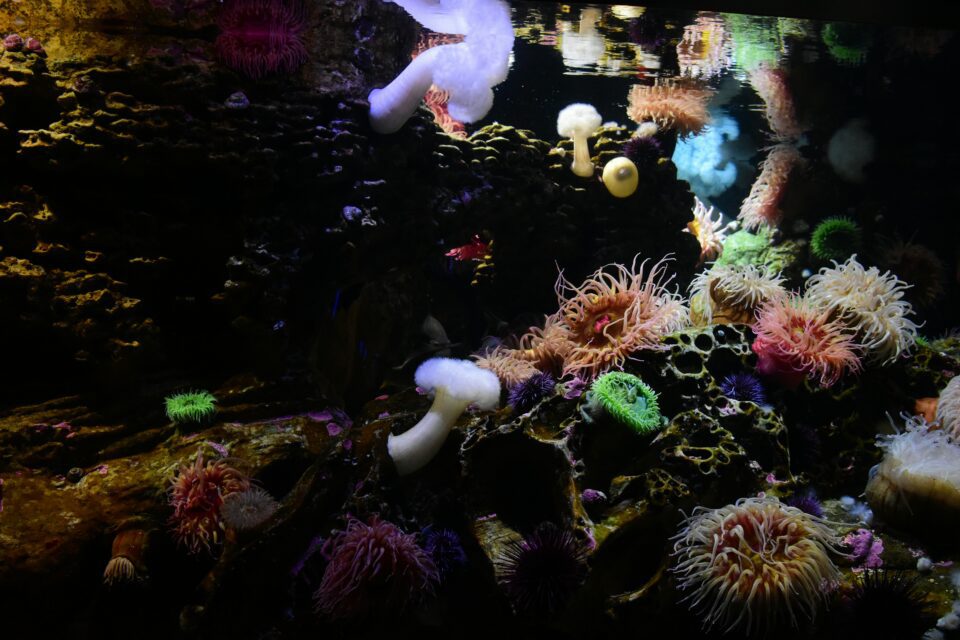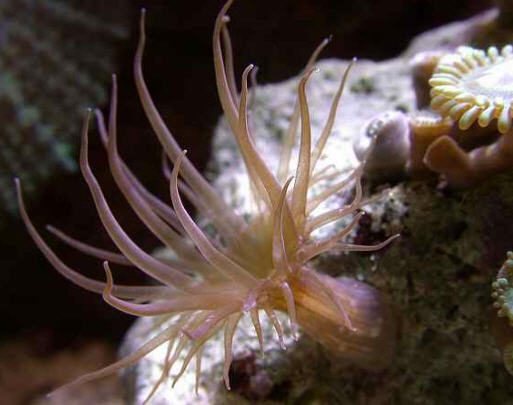Pests are one of the biggest problems with having a saltwater aquarium in the home. Not only do they kill your animals, they are usually not attractive and cause a lot of stress for you and the animals in the tank.
Instead of always having to chasing the new pest, what if you could stop the pest before they even become an issue? That is where certain animals come in. With the correct combo of animals in your saltwater tank, you may never know there was an issue!
Aiptasia
Aiptasia is one of the more annoying pests in your aquarium. Aiptasia is a pest anemone that kills other coral and over runs your aquarium quickly. They are hard to get rid of because any action usually causes them to spawn just increasing their numbers. But certain animals love them as tasty snacks.
One of the best animals is the Aiptasia eating filefish… it’s so good that it’s in the name. These unique and fun fish are peaceful, get along with other fish and are reasonably reef safe. They are a great addition to your tank. Another great aiptasia eating fish is the Copperband Butterflyfish. These are some of the most gorgeous animals in the ocean, but are notoriously hard to keep but very worth it if you can manage it. Some invertebrates eat aiptasia too, one of the easiest to come by is the Peppermint Shrimp. These shrimp devour aiptasia but there are multiple species named “peppermint shrimp” and only one eats aiptasia, so do your research.
Flukes
Flukes and other parasitic worms are insidious. Often times you don’t notice them until they have done real damage. They are translucent and until they start covering a fish completely they are almost invisible.
Cleaner wrasses are a great addition to a tank. Not only do they pick off dead scales, but they eat flukes and other parasites off your fish. Cleaner Skunk Shrimp are also of the “cleaner” variety. Get them in pairs and they will set up a fish “carwash” and fish will park next to them while they scour them for any issues, including flukes.
Asterina Starfish
Asterina starfish are a complicated one. Some people say they are harmless, others hate them. There are species that feast on certian corals like zoa’s and gsp, and overall are not a great addition to your tank. There are a couple predators we can get in a reef tank for an asterina. Six line wrasses have been known to eat asternia but they aren’t their first choice. Bumblebee snails also feed on them but they are slow at it and asternia breeding rapidly outpace them. The magic bullet is Harlequin Shrimp. These shrimp eat only one thing, starfish. They will rapidly eradicate any tank of all starfish.. the only issue is they starve afterwards. You must either continually add starfish like chocolate chips or trade them with others that have asterina problems.
Bristle Worms
Bristle worms are not necessarily a pest, but some people don’t like them. While they are a valuable member of a clean up crew they can get large and their bristles will annoy certain coral. Also if you ever get the bristles in your fingers, you quickly become not a fan.
Many wrasses like the Six Line wrasse; yellow coris wrasse, melanurus wrasse, sunset wrasse, Maori wrasse, and bird wrasse eats bristle worms, and any other pest in your tank. While extremely useful, they can be aggressive and it is suggested that they are one of your last fish introduced. The Copperband Butterfly Fish, Goat Fish and some Gobies also snack on them. Arrow Crabs, Coral Banded Shrimp and Horseshoe crabs are smaller and get into spots fish cant, so they help kill the smaller ones before they get large.
Vermetid Snails
Vermetid Snails are a difficult pest with only one known predator, the Bumblebee Snail. Bumble Bee Snails are highly efficient scavengers that consume any leftover food and are particularly skilled at preying on the troublesome Vermetid Snail. They are often employed to eliminate Vermetid Snails from aquatic systems by inserting their elongated trunks into crevices and consuming the Vermetid Snail.
Flatworms
Flatworms come in multiple varieties. Some, like Ghost Flatworms, are harmless. Others feed on coral killing your beautiful reef. Luckily Flatworms are eaten by many animals. These predators include Six Line Wrasses, Yellow Coris Wrasses, Melanurus Wrasses, Leopard Wrasses, Spotted Mandarins, and even Blue Damsels. Additionally, the Blue Velvet Nudibranch is a highly effective predator of flatworms. However, once the flatworm population has been eliminated, the Nudibranch will also perish due to the lack of its primary food source.
Zoa-Eating Nudibranchs
Nudibranchs come in almost infinite varieties. A unique thing about Nudibranchs is that they are evolved to eat one thing, and one thing only. Depending on the species this “thing” varies. The worst ones are the ones that will eat our corals. While this is specifically about the Zoa-Eating variety, it applies to all Nudibranchs.
And we turn back to our old friend, the wrasses. Wrasses like the Six Line, Leopard, and Melanarus do eat Zoa-Eating Nudibranchs. As you can see reading this article, wrasses are one of the most effective pest removal animals.
Conclusion
Many pests are introduced, sometimes in ways you can never figure out. They are hitchhikers on coral, already infected in fish, or even come in live sand or rock. Certian animals can keep these at bay or erradicate them completely.
So what is our dream lineup? A nice compliment of Bumblebee Snails; a variety of Skunk Cleaner Shrimp and Pepperment Shrimp, a Cleaner Wrasse, a Six Line Wrasse, and either an Aiptasia Eating Filefish or a Copperband Buttefly Fish would keep almost any tank pest free.




